Banking Web Interface
Banking Web Interface is a visualization instrument that provides access to all the necessary Banking services, starting from account opening and ending in exchanging cryptocurrencies. The following guide leads the user through the essentials of Banking Web Interface and provides instructions on the actions available.
The Web Interface design varies depending on the visual solutions of the White Label providing the service. Nevertheless, the interface structure and functionality are implemented according to the following guide.
Overview
The Web Interface consists of several functionality fields that provide quick access to all the necessary details of your accounts in <White Label>. See the image below to navigate across the interface:
The Navigation sidebar is the main navigation instrument to switch between the Web Interface functionalities.
The Quick Access field includes the most frequently used actions – opening a new account, topping up, and transfers.
The Total balance field demonstrates the sum of funds from all the opened accounts.
Primary account details and the linked cards.
Recent currency exchange orders.
Transaction history demonstrates recent transactions including transfers, fees, and card transactions.
Profile option allows to switch between personal and business profiles without signing out of the Web Interface.
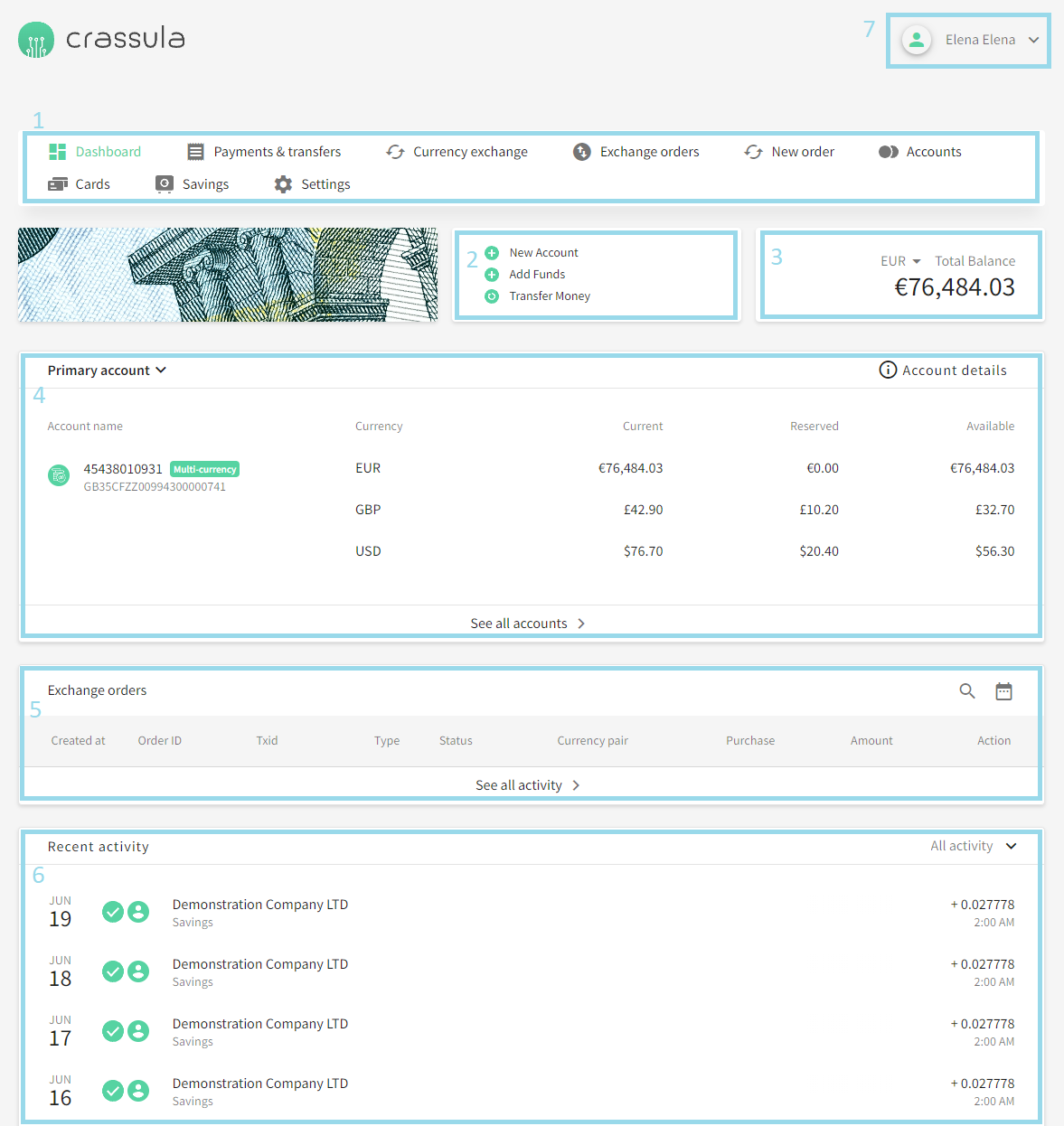
Signing up
An existing profile is required to have access to all the Web Interface functions. Follow the steps below if you have not registered yet:
Navigate to <link>.
Click Sign Up below the form to start creating your profile. A page with profile types will be opened.
Click Create to open a Private account. The Sign-Up form will be opened.
Fill in your personal details and acquaint yourself with the terms of use provided below.
Click Create Account to submit the form.
Your profile is successfully created and the Primary account is opened automatically.
Check your email for the identification link provided by the service. Follow the instructions to verify your email address.
Once your email is verified you will be navigated to a phone verification link. Enter the verification code sent to your phone to verify your contacts.
Navigate to the document verification page using one of the following methods:
A link for document upload.
A QR-code for online video verification.
Complete the questionnaire (optional).
Wait for the document approval (takes up to several minutes).
Once the document approval is complete, the primary account is activated.
Navigate back to the Sign-in page to log in using the newly created credentials.
It is possible to Sign in to the Web Interface before completing the identification process, though such actions as transfers, currency exchange, and card issuing will be restricted.
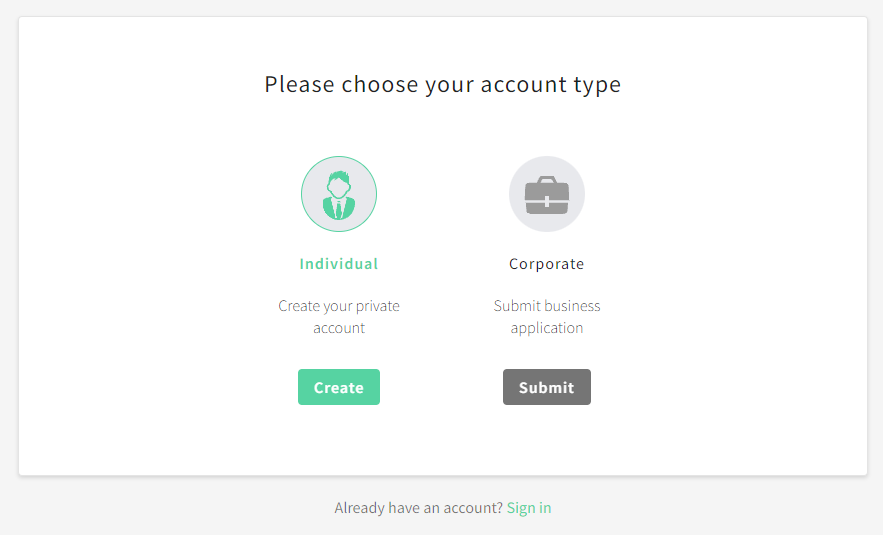
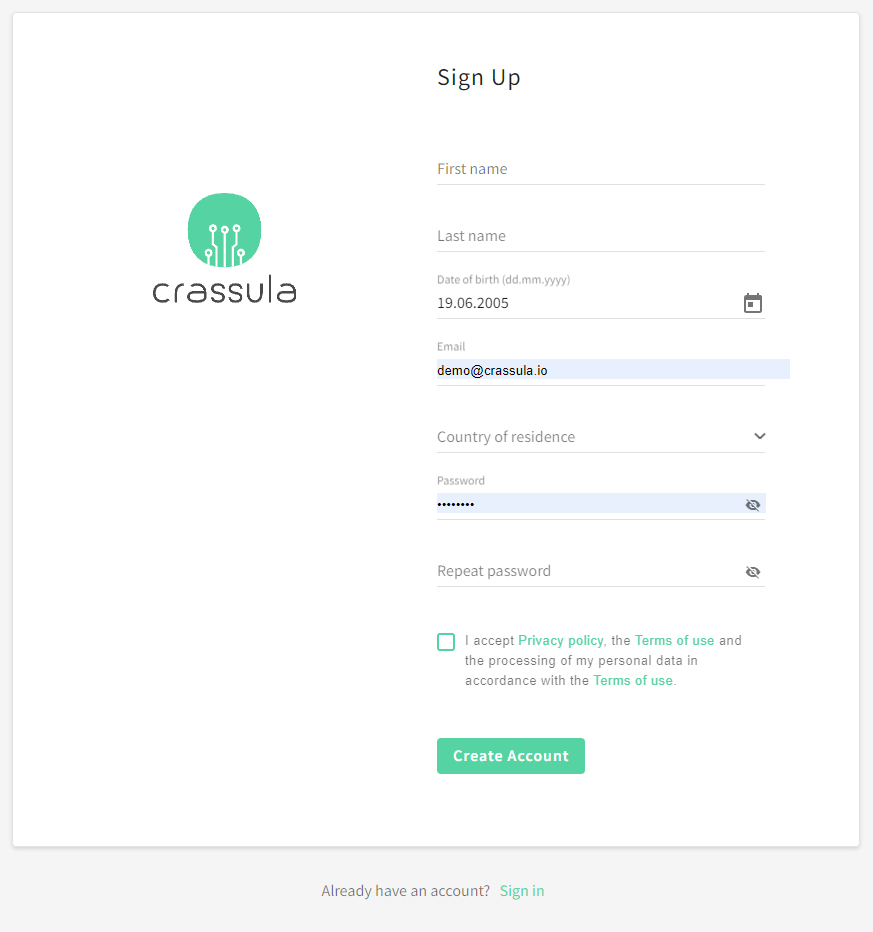
Signing in
If you already have an account, follow the steps below to sign in:
Navigate to <link> .
Fill in your credentials for authorization.
The Web Interface will be opened
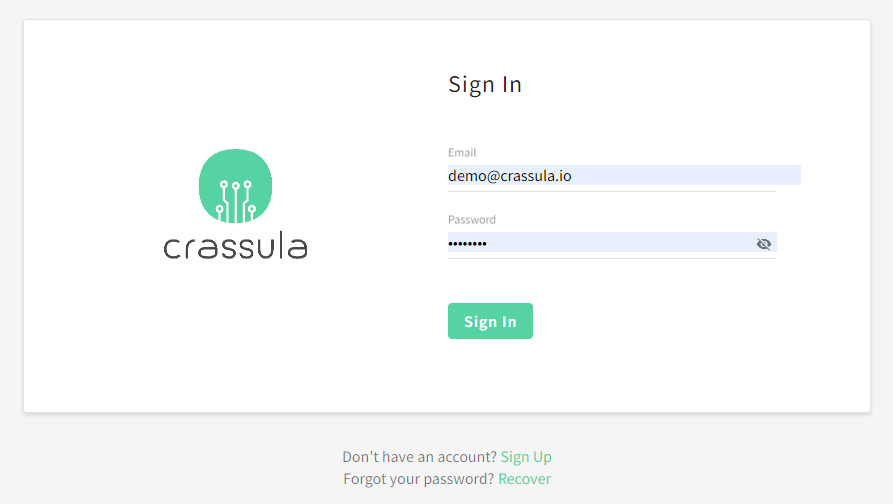
If you forgot your password, the recovery process is executed as follows:
Click Recover below the Sign-in form. The password recovery window will be opened.
Enter your email address and click Reset.
The password recovery email will be sent to your email - follow the instructions to reset your password.
Navigate back to the Sign-in page and log in using the updated credentials.
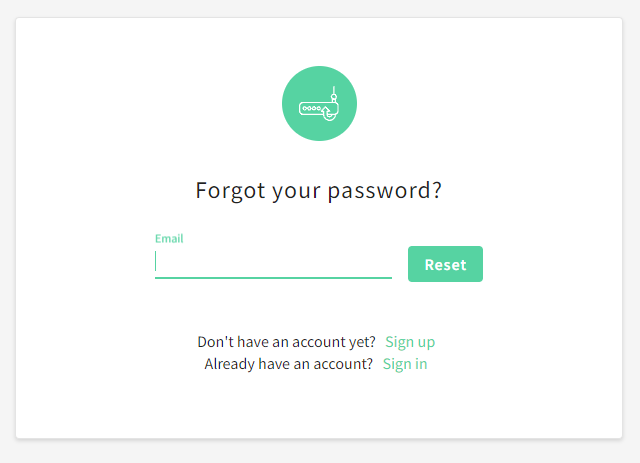
Settings
Navigate to Settings in the top sidebar to manage your personal details.
Profile
The Profile tab provides general information on your profile.
Personal details: the field defines general personal details. It is possible to edit the details, though all the new information is to be verified by additional documents.
Username: the username can be used instead of account details to transfer funds inside the <White Label>.
Language: the field defines the interface localization languages available in the <White Label>.
Contact information: the field defines main contact details. It is possible to edit the details, though all the new information is to be verified by additional documents.
Client tier: the field shows current tier level. When provided by the <White Label>, you can upgrade/downgrade your tier level for an extra charge to change your profile limits and rates.
Cashback: the field shows all active cashback reward programs that are applied to your outgoing transfers.
Fees: the field shows all active fees that are applied to your transfers and other transactions.
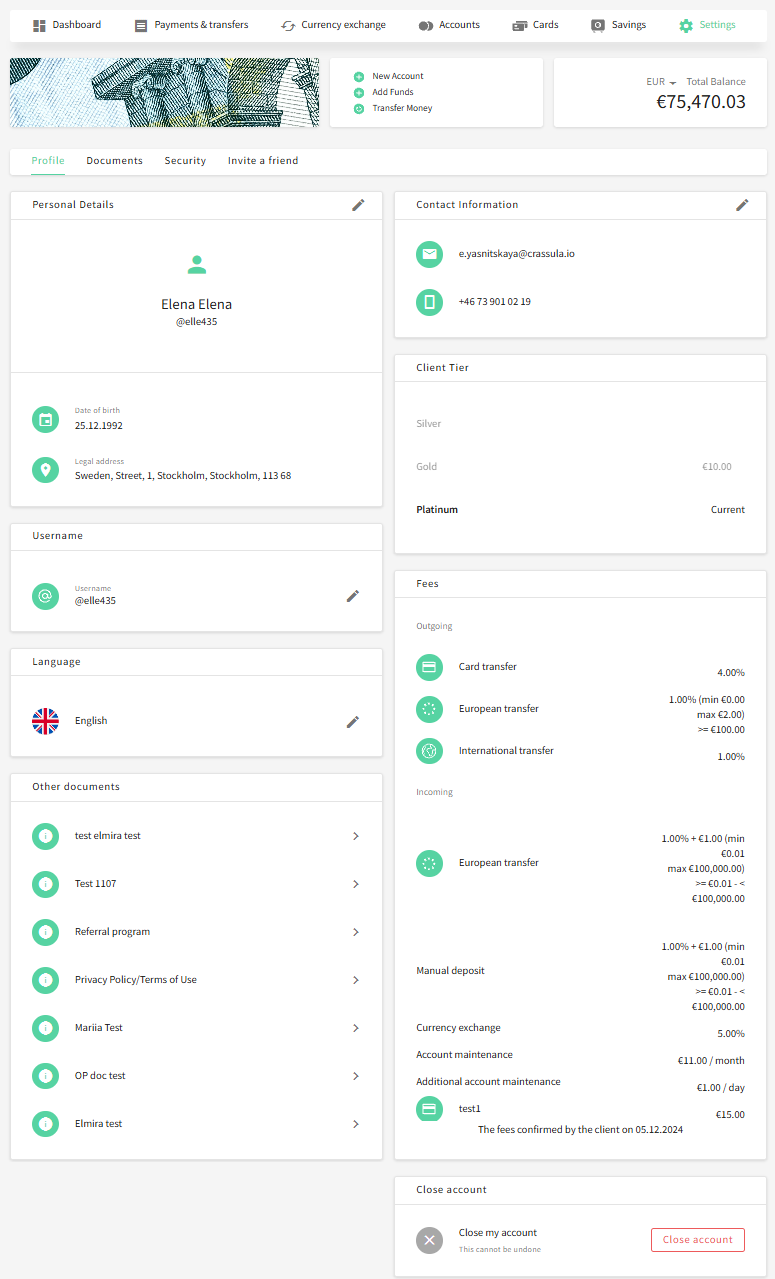
To upgrade your tier level
Navigate to the Client Tier field of the profile settings.
Click Upgrade in the corresponding tier line.
The payment widget will be opened.
Set an account for payment processing.
Set a currency for multi-currency accounts.
Click Get <Tier_name> to confirm the upgrade.

Documents
The Documents tab provides a convenient way to upload a new document if one is requested by the compliance and support teams. Click Choose a file to upload a document.
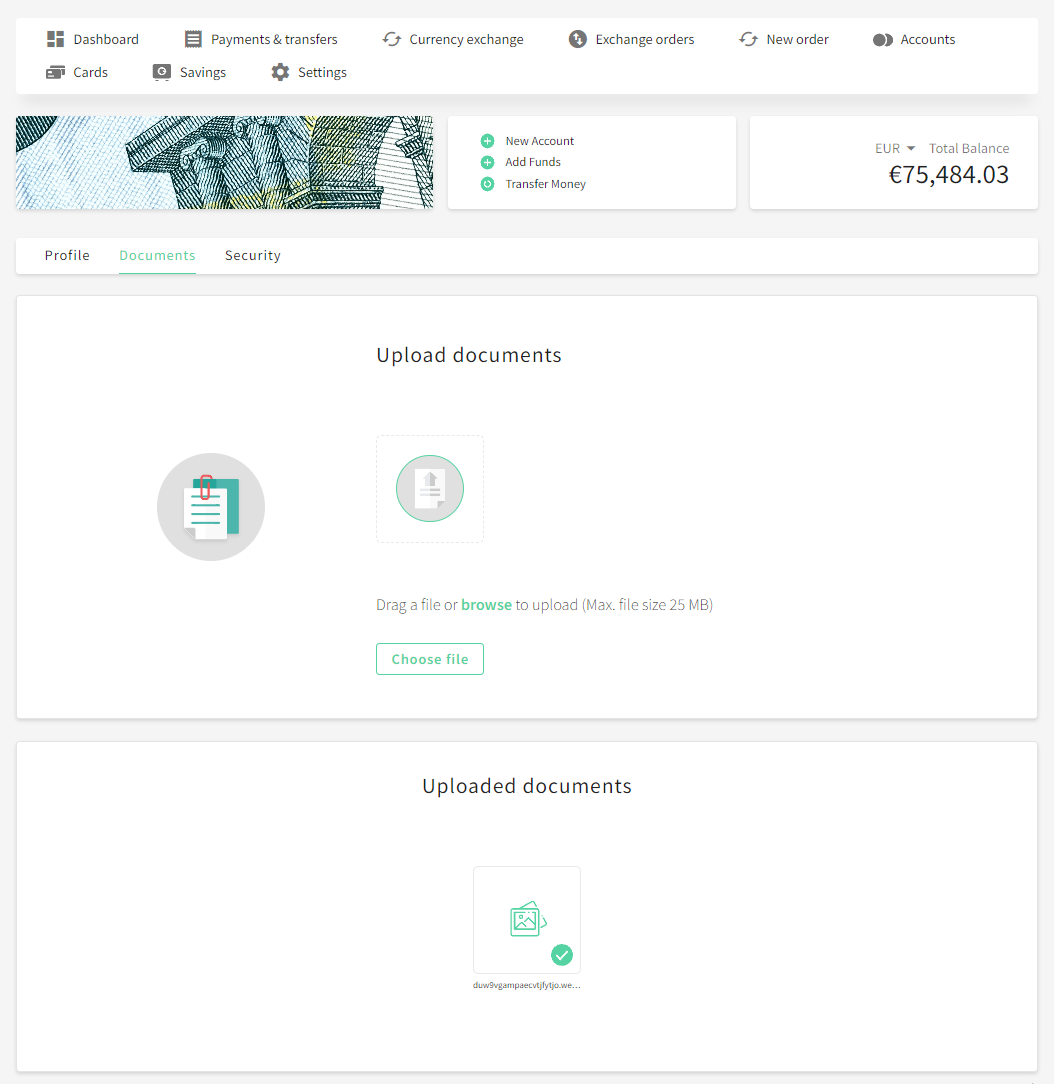
Security
Currently, the Security section is available only for Persons.
The Security section provides a convenient way to set additional means of your profile protection:
2-step Verification is an additional functionality of profile protection (only active clients can change their 2FA details):
Text message - confirm app activity using codes sent as text messages to your mobile phone.
Authenticator app - confirm app activity using either Google Authenticator or Authy.
Change password - change your profile password. A currently active password is required.
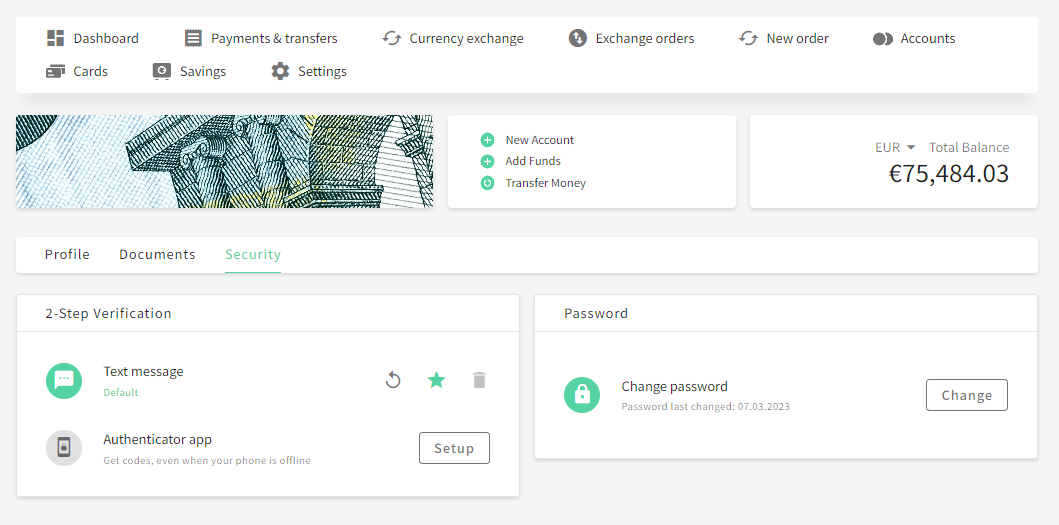
Invite a friend
This section allows clients to share their referral codes with friends to join the financial service. Both the referrer and the referral can earn rewards on eligible transactions, fostering a seamless and rewarding referral experience. See Referral program for additional details on the functionality.

.png)